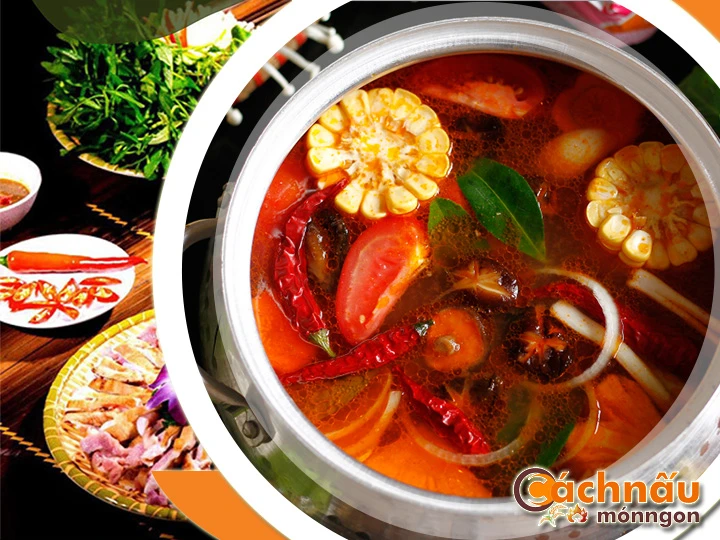This comprehensive guide explores the full scope you need to be aware of about rabbit hot pot, from its historical background to trendy versions, wellness benefits, and detailed guide for creating the ultimate plate at home. Whether you are a professional cook or a aspiring chef, this guide will stimulate and assist you to perfect the skill of rabbit hot pot.

A LEGACY & PRACTICES REGARDING BRAISED RABBIT DISH.
Rabbit hot pot stands as a distinctive and classic dish with rich heritage in many areas. Its admiration stems not only from its hearty flavor but also from its legacy and traditions.
1. The Past relating to Braised bunny dish.
- Tracing Back: Rabbit hot pot was first made in countryside where these animals were a accessible, healthy food source. In China’s past, it was a loved recipe, particularly during festive times.
- Becoming a Global Favorite: In the West like Germany, rabbit was frequently added to soups, changing into modern versions of rabbit stew as the dish gained global appeal.
2. Hearty Rabbit Meal integral to East Asia's Customs.
- China: Known as the famous rabbit hot pot, rabbit hot pot is widely known in the Sichuan region, well-known for its fiery flavors and cherished at special celebrations.
- Throughout Korea and Japan: While less common, rabbit hot pot is sporadically cooked as a healing cuisine in the Korean Peninsula, or borrowing ideas from Japanese hot pot traditions in Japanese cuisine, featuring local seasonal crops and flavors.
- Throughout Vietnam: Although rabbit hot pot is uncommon in everyday meals, it is appreciated during noteworthy gatherings or in rural areas where rabbit meat is abundant. It is often made using distinctive spices such as lemongrass, fresh ginger, and red chili, paired with fresh vegetables like morning glory, mustard leaves, or water mimosa. This dish is highly valued for its distinct taste and dietary value, frequently enjoyed during gatherings with friends or family.
Trong văn hóa Việt Nam, tuy không thuộc là món ăn phổ biến từng ngày, nhưng được yêu thích trong những ngày lễ lớn hoặc ở khu vực nông thôn, nơi nguồn thịt thỏ phong phú. Thường được tẩm ướp với mùi thơm từ sả, gừng, và ớt tươi, kết hợp với cải bẹ xanh. Món ăn này được lòng nhiều người nhờ sự đặc sắc trong hương vị và lợi ích sức khỏe, thường các buổi gặp gỡ bạn bè.
3. Traditional Rabbit Cuisine central to Culinary Practices of Europe.
- Across France: Traditionally served as a rich stew with wine-infused broth, seasoning herbs like rosemary, and earthy roots. Rabbit hot pot is a time-honored dish for special celebrations.
- In Italy: The dish “Cacciatore”, featuring rabbit simmered with wine and tomatoes, is a foundation for hot pot recipes with rabbit.
HOW TO COOK RABBIT HOT POT: RECIPES AND TECHNIQUES
Rabbit hot pot is a adaptable dish that combines natural components, aromatic broths, and specialized methods to create a filling and flavorful experience. Below are essential tips into the core recipes and techniques to perfect rabbit hot pot.
The Fundamental Recipe for Rabbit Hot Pot
* Ingredients:
- 1 whole rabbit (cut into pieces)
- 4 cups of broth (vegetable)
- Vegetables (bok choy)
- Spices and herbs (garlic)
- Seasonings (soy sauce)
- Optional: noodles for serving
* Cooking Instructions:
- Prepare the Rabbit: Clean and cut the rabbit into pieces. Season with salt, black pepper, and a splash of soy sauce for 30 minutes to enrich the flavor.
- Create the Broth: Heat a vessel with a touch of nấu lẩu thỏ oil. Cook minced garlic and ginger until fragrant. Add your choice of broth and bring it to a light boil.
- Simmer the Rabbit: Add the rabbit pieces into the pot and let them simmer on gentle heat for 30-40 minutes until tender.
- Include the Veggies: Add your chosen vegetables and cook until they are tender but still vibrant.
- Plate Up: Transfer the hot pot to a portable stove. Serve with accompaniments and side options like rice or noodles.
Key Techniques for Cooking Rabbit Hot Pot
- Seasoning:
. Marinate the rabbit with a mixture of salt, pepper, and spices to intensify its original taste.
. For more complexity, use wine, soy sauce, or a mix of fragrant herbs.
- Building Layers of Flavor:
. Start by simmering the rabbit in the broth to release its rich flavor.
. Layer vegetables strategically based on their cooking times.
- Optimal Cooking Duration:
. Avoid overcooking the rabbit, as it can turn chewy.
. Test for readiness by checking if the meat is fork-tender.
- Taste Customization:
. Perfect the flavor by adding extra herbs as needed.
. Experiment with different flavor profiles, such as spicy Sichuan-style variations.
Pro Tips for Rabbit Hot Pot
- Fresh Ingredients: Always choose fresh rabbit meat and farm-fresh produce for the best results.
- Taste and Adjust: Be attentive of the saltiness in the broth. Try and refine frequently during cooking.
- Sauce Pairings: Offer a variety of sauces like spicy garlic dip or soy-based dips to elevate the dining experience.
- Visual Appeal: Use a communal pot or serve the hot pot as a focal point to promote sharing.
With mastery of these recipes and techniques, you can make a rabbit hot pot that’s tasty and beautifully presented, ensuring it becomes a standout dish for any meal or gathering.